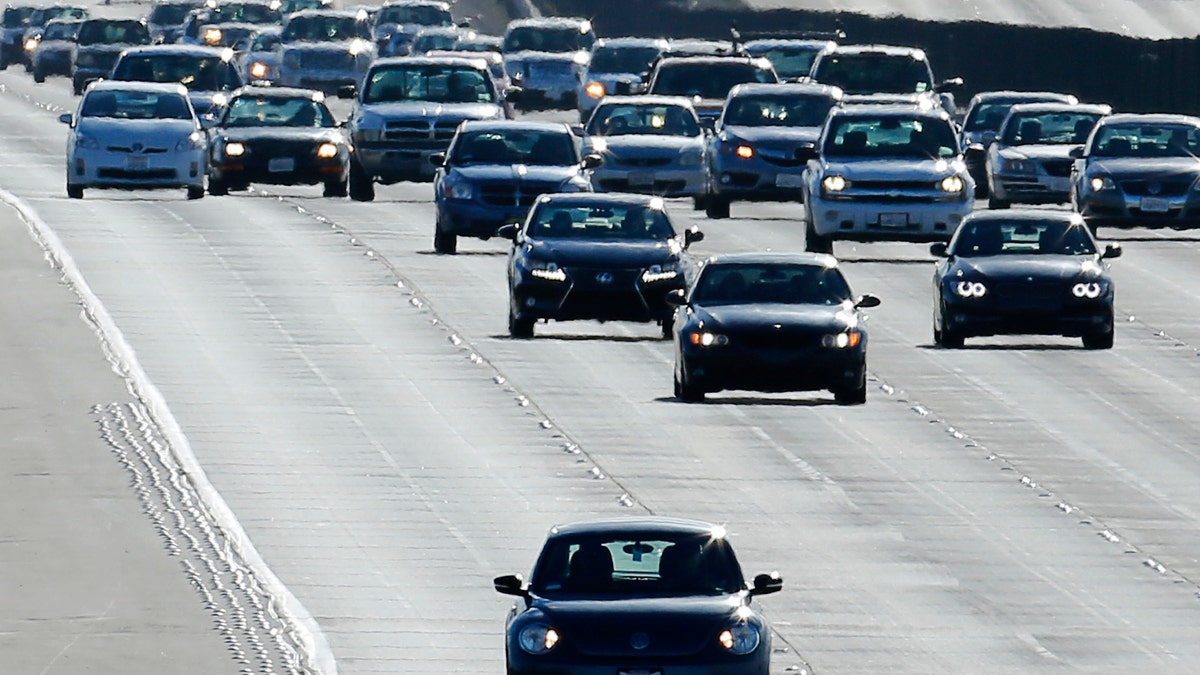
Vehicles travel north from San Diego to Los Angeles along Interstate Highway 5 in California December 10, 2013. (REUTERS/Mike Blake)
Teenagers are more likely than middle aged drivers to die in crashes while driving older, smaller cars, according to a recent study.
Based on a census of fatal car accidents over five years, researchers found that four out of five teens killed were driving cars that were at least six years old and nearly half drove cars that were more than 11 years old. In addition, nearly one third of the teens killed were driving small or mini cars.
“Many teenagers are driving – and dying in – the least protective types of vehicles,” said Anne McCartt, a senior vice president of research at the Insurance Institute for Highway Safety (IIHS) who led the study.
Car accidents are the leading cause of death among U.S. teenagers, and teens are three times more likely than adults to have a motor vehicle accident, McCartt told Reuters in an email.
Teens are less mature and often more confident than adult drivers, leading them to speed and neglect to wear seatbelts, said Keli Braitman, an assistant professor of psychology at William Jewell College in Liberty, Missouri, who studies teenage drivers.
“Because of their lack of experience, they’re also less able to recognize and handle emergencies and hazards when they arise,” she told Reuters Health in an email. Braitman was not involved in the new study.
McCartt and another researcher used data on fatal accidents from the Fatality Analysis Reporting System covering 2008 through 2012. They examined the types and sizes of cars driven by 15- to 17-year-olds who were driving when killed in a crash, then compared results to drivers between 35 and 50 years old who died behind the wheel.
In the sample of around 2,500 teens, 82 percent were killed in crashes while driving cars over six years old and 48 percent drove cars over 11 years old.
Among the 19,000 middle-aged drivers killed, 77 percent were in cars more than six years old and 46 percent had cars over 11 years old.
The car sizes involved in the fatalities differed considerably between age groups. Among the teens, 29 percent were driving a mini or small car and 23 percent were driving a mid-size car when they crashed. In comparison, 20 percent of middle-aged drivers had a mini or small car and 16 percent a mid-size, when killed.
Older drivers were more likely to be in large pick-up trucks (17 percent, versus 10 percent of teens) and midsize SUVs ( 11 percent, versus 9 percent of teens), according to the results published in Injury Prevention.
“Newer vehicles tend to fare better in crashes than older vehicles, and are more likely to have safety features,” Braitman said. She listed electronic stability control (ESC), a program that automatically applies breaks when the car skids, as a key feature.
Another important safety feature is side air bags, which Braitman said can protect both the driver and passengers in a crash.
“Smaller, lighter vehicles don’t afford as much crash protection as bigger, heavier vehicles,” McCartt said.
One limitation of the study, Braitman noted, is that the researchers did not compare data on people killed in crashes to those who didn’t die. This makes it difficult to say, for example, whether teens are more often killed in older cars because these cars are more dangerous or because teens are more likely to drive older cars.
According to McCartt, parents are concerned with safety, but often do not have up-to-date information on safety features. The IIHS, which funded the study, offers an online guide for parents to help them choose the safest possible used cars at a reasonable price (bit.ly/1qWIc63).
The guide, titled “Safety rides shotgun: the best used vehicles for teen drivers,” advises against high horsepower, and recommends bigger, heavier cars as well as cars with ESC and good crash test ratings.
“A teenager’s first vehicle is more than just a financial decision. Parents need to do their homework and factor in safety as well as affordability,” McCartt said.
